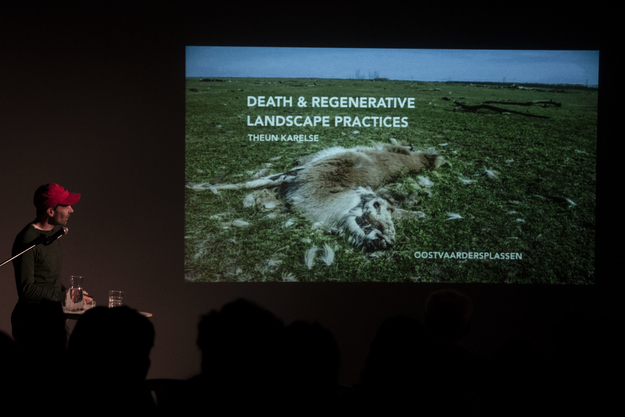Synopsis
The ways human beings have memorialised the dead has always been a reflection of a society’s changes over time. Burying and commemorating the dead are practices that we have done for thousands of years, and are characterised by constant evolution. Developing from the “grave fields” of prehistoric times, to religiously sanctioned and controlled graveyards, and again into the the diverse cemeteries of today; cemeteries and their construction have a rich history.
In the Netherlands, there is a long tradition of burying the dead. Cemeteries were located at the centre of villages and cities, often as a part of churches the ceremonies were held in. Due to urban expansion, secularisation, professionalisation and the increasing demand for cremation, cemeteries had to be relocated outside of the expanded cities. This move and new culture around death opened up the possibility to redesign death architecture.
For example in modern day western Europe, there is an increasing popularity of natural burials, a more eco-friendly burial environment. Which raises design questions: Do we need to re-thing our present goodbye architecture? Could the redesign of these places help us connect to our inevitable nature of death? Independently of religion, where do we want to remember our loved ones, express our personalities or reflect on life?
This evening, we will discover some interesting ideas about death embracing architecture. After an introduction and short review of the current goodbye architecture by curator Susanne Duijvestein, artist and ecologist Theun Karelse will share his ideas of iconizing death in landscape architecture. Architect David Rademacher will show us his crypt concept for repurposing the old ENCI-mines in Limburg and architecture master-student Robin Beers will share her dreams of dying in the flood plains of the Waal river. We will close the evening with some thoughts on designing spaces for watercremation and composting bodies, two emerging alternatives for burial and cremation.
David Rademacher
After several years of lecturing and researching landscape architecture at ETH Zurich, Berlage Institute, Center of Advanced Studies in Architecture and Urban design and the Academy for Architecture in Rotterdam and Tilburg, David Rademacher started design and research office Rademacher de Vries that focuses on architecture, the city and the urban environment. In his work, David seeks to produce relevant spatial insights that are rooted in a self-conscious understanding of our discipline and culture. In 2008, David Rademacher created a design for the transformation of the industrial ENCI-quarry into a public landscape and included a crypt concept.
Robin Beers
Robin Beers is an architecture masterstudent at the ArtEZ Art Academy and designer in training at urban strategy and architecture office INBO. She designed a concept in 2019 for a hospice and wake site where people can peacefully die and rest in the flood plains of the Waal river in Nijmegen.
Susanne Duijvestein
After eleven years in cooperative banking, Susanne Duijvestein switched into funeral business. Being young, progressive and independent, she reflects on the ethics and aesthetics in this world, but she also likes to reflect on how we relate to our own transience, what we eventually leave behind on this planet and how we can reclaim a non-commercial funeral culture again. Susanne is curator Pro Mortem at Mediamatic.
Information
Still Life: Death Architecture
Wednesday, the 18th of September
Start 20:30
Mediamatic Biotoop, Dijksgracht 6, Amsterdam
Tickets: Full price €7,50 | Student / Artist / Stadspas €5,25* | +€2,50 at the door | (including €1 administration fee)
*We give a discount to students and artists. If this applies to you we will ask to see your kvk nr/portfolio or student card for this option. For questions please send an email to mail@mediamatic.nl.
You will receive a 25% discount on our 3-course menu at Mediamatic ETEN upon presentation of your ticket! Only valid on day of event.










